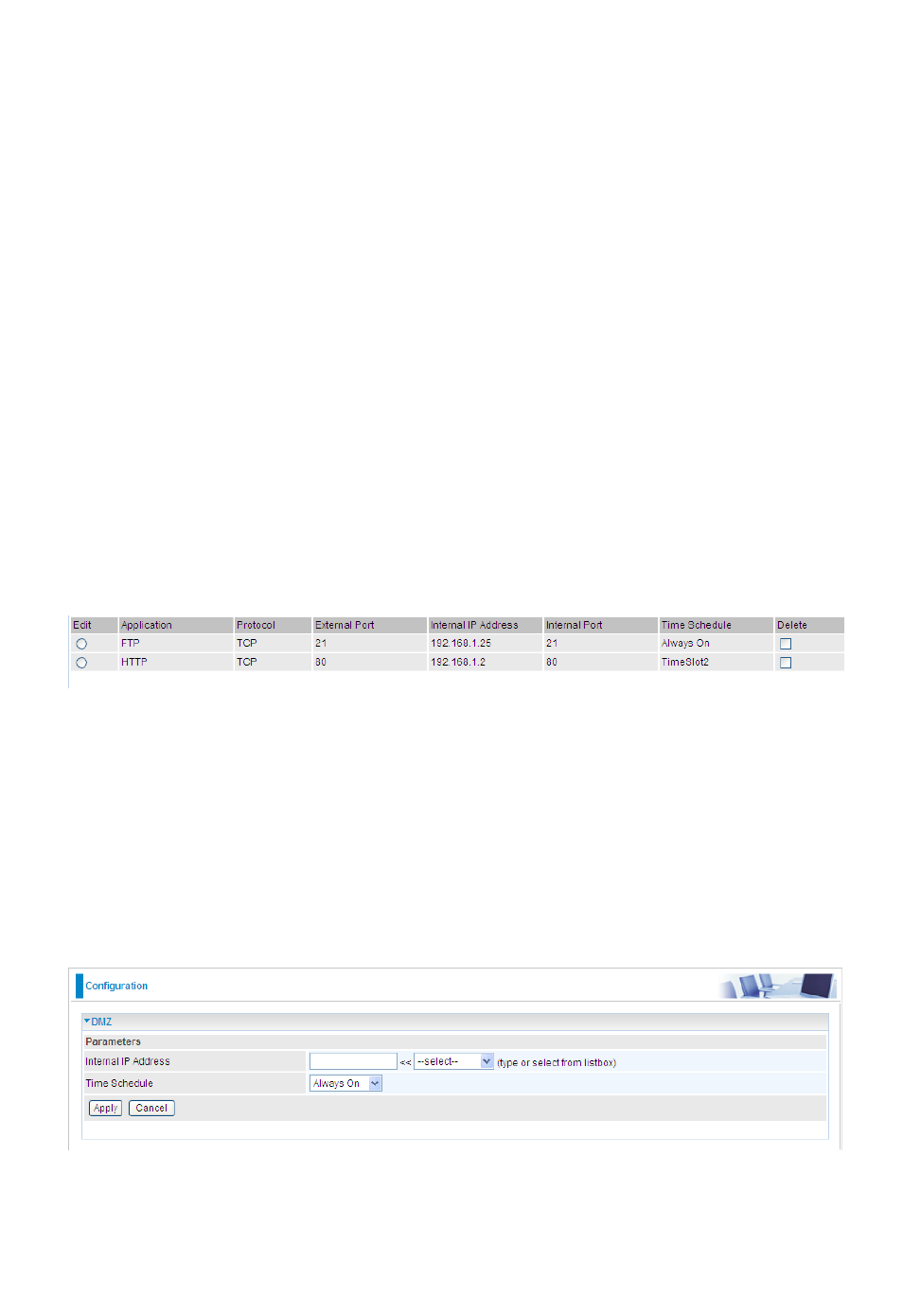Niveo Professional NWAR33P User Manual
Page 129

129
Edit: Check the Edit radio button to display the parameter of the selected application, then after
changing the parameters click the Edit/Delete button to apply the changes.
Delete: To remove a port mapping application, check the Remove box of the selected
application then click the Edit/Delete button.
Time Schedule: A self defined time period. You may specify a time schedule for your port
mapping. For setup and detail, refer to Time Schedule section.
Since NAT acts as a “natural” Internet firewall, your router protects your network from accessed
by outside users, as all incoming connection attempts point to your router unless you specifically
create Virtual Server entries to forward those ports to a PC on your network. When your router
needs to allow outside users to access internal servers, e.g. a web server, FTP server, Email
server or game server, the router can act as a “virtual server”. You can set up a local server with
a specific port number for the service to use, e.g. web/HTTP (port 80), FTP (port 21), Telnet
(port 23), SMTP (port 25), or POP3 (port 110). When an incoming access request the router for
a specified port is received, it is forwarded to the corresponding internal server.
For example, if you set the port number 80 (Web/HTTP) to be mapped to the IP Address
192.168.1.2, then all incoming HTTP requests from outside users are forwarded to the local
server (PC) with the IP address of 192.168.1.2. If the port is not listed as a predefined
application, you need to add it manually.
In addition to specifying the port number used, you also need to specify the protocol used. The
protocol is determined by a particular application. Most applications use TCP or UDP, however
you may also specify other protocols using the drop-down Protocol menu. Setting the protocol to
“all” causes all incoming connection attempts using all protocols on all port numbers to be
forwarded to the specified IP address.
DMZ
The DMZ Host is a local computer exposed to the Internet. When setting a particular internal IP
address as the DMZ Host, all incoming packets that do not use a port number which is already
used